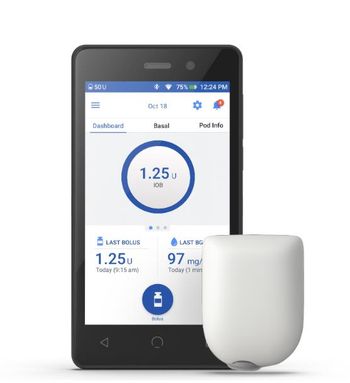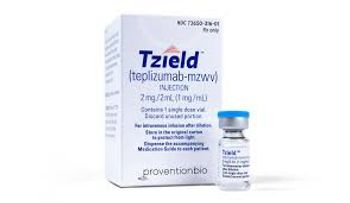
Unintended Effects of Caps on Insulin Out-of-Pocket Costs
People with higher incomes and those in health plans with health savings accounts benefit more than others, according to research results published this week in the Annals of Internal Medicine. The research also showed no increase in insulin use,
Caps on out-of-pocket expenditures for insulin were not associated with increased use of insulin and had a limited effect on out-of-pocket costs for patients enrolled in the most common type of health plan, according to research results reported in the Annals of Internal Medicine this week.
The unexpected results might give lawmakers and others pause as proposals to extend a monthly cap of $35 on insulin out-of-pocket expenses beyond Medicaregets debated in Congress and in policymaking circles.
The results also suggest that people with higher incomes may benefit more from capping out-of-pocket expenditures than those with lower incomes.
All patients with type 1 diabetes and many with type 2 need to take insulin to keep their blood sugar levels in a healthy range. Amid the long-running debate and interest group politics swirling around high drug prices, insulin prices have stood out for several reasons. Prices increased manyfold in the early 2000s, even though insulin is an old drug. Prices are also much higher in the U.S. than in other comparable countries. A Rand study published earlier this year found that even after rebates and discounts, insulin prices in the U.S. are 2.3 times higher than prices in other developed countries.
Caps on out-of-pocket expenditures have been seen as a way to protect patients from these high prices. The Inflation Reduction Act of 2022included provisions that capped out monthly out-of-pocket costs at $35 for insulin covered by Medicare Part D starting Jan. 1, 2023, and by Part B starting July 1, 2023. Insulin is usually self-administered as a subcutaneous (under the skin) injection or with a wearable insulin pump.
The results reported in the Annals found no different insulin use after an out-of-pocket cap went into effect in eight states in January 2021. Use was measured by how often insulin prescriptions were filled by people with diabetes. The results showed that out-of-pocket expenditures were lower by $11.46 per month in the states with caps compared with a group of 17 states that functioned as a control group. However, the out-of-pocket cost difference was concentrated among people with diabetes who had enrolled in high-deductible health plans with health savings accounts. There was no change for the roughly 80% of the people with diabetes enrolled in health plans without high savings accounts or somewhat similar benefit design called health reimbursement arrangements.
“Our findings suggest that the proposed national $35 insulin cap for commercially insured persons would have a small effect on OOP (out of pocket) costs for the majority of affected insulin users and would not broadly increase insulin use,” wrote lead author Laura F. Garabedian, Ph.D., M.P.H., and her colleagues in the concluding paragraph of the discussion section of the study.Garabedian is an assistant professor in the Department of Population Medicine at Harvard Medical School and the Harvard Pilgrim Health Care Institute, both of which are in Boston.
Garabedian and her colleagues offered three possible explanations for caps not translating into greater insulin use: insulin use before the caps went into effect might have been adequate among the residents of higher-income areas who made up most of the people included in the study; the caps might not have been low enough to induce people who needed insulin to get more prescriptions filled; and some people may have seen the out-of-pocket cap as a way to afford switching to more expensive insulin formulations rather than increasing prescriptions.
They also noted that the study was limited to people covered by one insurer. The insurer wasn’t explicitly named, but Garabedian and her colleagues said they used an Optum database and Optum is the health services arm of UnitedHealth Group, the part company of UnitedHealthcare. They also noted that their pre-post study was limited to nine months before the out-of-pocket caps went into effect and nine months after, which was perhaps not enough for the cap to influence the use of insulin. The research said that “improving insulin underuse” will likely need “multifaceted” approaches, including more publicity about the caps and potential savings for patients and “enhanced identification of affected patients.”
The eight states in the study included in the study are New Mexico, Maine, Utah, Virginia, Washington, New York, Illinois and Delaware. The monthly out-of-pocket caps ranged from $25 in New Mexico and Maine to $100 in Washington, New York, Illinois and Delaware. Garabedian and her co-authors used pharmacy claims and other data to identify 16,043 people with diabetes in the states with insulin caps and 63,751 people with diabetes in the control group states.In the states with caps, 2,627(16.4%) of the people with diabetes were in high-deductible health plans with health savings accounts, 319 (2%) were in plans with health reimbursement arrangements (which involve the employer, not the employee, putting up funds that can be used for healthcare expense) and 13,097 (81.6%) were in plans with neither a health savings account nor a health reimbursement arrangement. Garabedian and her co-authors called such plans “nonaccount plans.”
When Garabedian and her colleagues sorted the people with diabetes by income, they found that those with higher income benefited more from the caps than those with lower income. In states with $25 to $30 caps, they found that higher-income insulin users experienced an average reduction in out-of-pocket costs of $37.40 compared with a $4.81 drop for lower-income insulin users. In the states with $100 caps, there was a less of a difference ($9.57 versus $5.96) but high-income users still bettered benefited more than low-income users. Garabedian and her colleagues noted that higher-income insulin users tended to have higher out-of-pocket costs before the caps went into effect, perhaps because they use more expensive formulations. “Future policies should consider approaches that target lower-income members with diabetes, who are most vulnerable to high insulin OOP costs and the detrimental health effects of high cost-sharing,” they wrote.
Results also showed people enrolled in high-deductible health plans with health savings accounted benefitted much more from the caps than those enrolled in the nonaccount plans. In the states with the $25 to $30 caps, people in the high-deductible health plans with health savings accounts experienced a $64.11 decrease in out-of-pocket costs compared with $8.15 decrease for those in the nonaccount plans (a difference that didn’t meet statistical significance tests). This makes sense because people with HSAs tend to pay full price fo insulin. Garabedian and her co-authors said that data for 2017 show that insulin users with HSAs had monthly insulin out-of-pocket costs that were three times higher than those in nonaccount plans ($141 vs.$48). The trade-off is that the premiums for high-deductible health plans with health savings accounts are lower.
Newsletter
Get the latest industry news, event updates, and more from Managed healthcare Executive.

















































